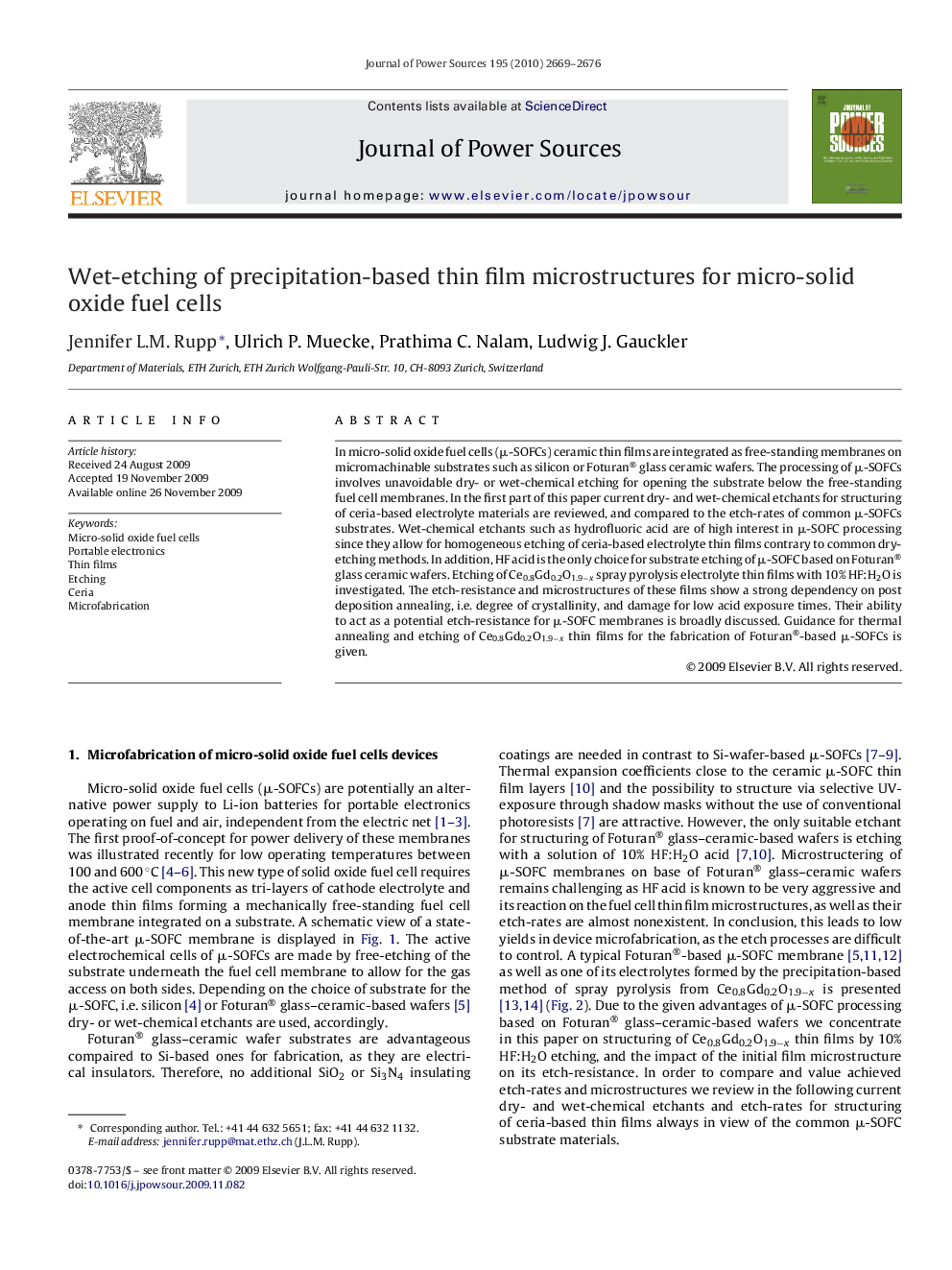| Article ID | Journal | Published Year | Pages | File Type |
|---|---|---|---|---|
| 1285020 | Journal of Power Sources | 2010 | 8 Pages |
In micro-solid oxide fuel cells (μ-SOFCs) ceramic thin films are integrated as free-standing membranes on micromachinable substrates such as silicon or Foturan® glass ceramic wafers. The processing of μ-SOFCs involves unavoidable dry- or wet-chemical etching for opening the substrate below the free-standing fuel cell membranes. In the first part of this paper current dry- and wet-chemical etchants for structuring of ceria-based electrolyte materials are reviewed, and compared to the etch-rates of common μ-SOFCs substrates. Wet-chemical etchants such as hydrofluoric acid are of high interest in μ-SOFC processing since they allow for homogeneous etching of ceria-based electrolyte thin films contrary to common dry-etching methods. In addition, HF acid is the only choice for substrate etching of μ-SOFC based on Foturan® glass ceramic wafers. Etching of Ce0.8Gd0.2O1.9−x spray pyrolysis electrolyte thin films with 10% HF:H2O is investigated. The etch-resistance and microstructures of these films show a strong dependency on post deposition annealing, i.e. degree of crystallinity, and damage for low acid exposure times. Their ability to act as a potential etch-resistance for μ-SOFC membranes is broadly discussed. Guidance for thermal annealing and etching of Ce0.8Gd0.2O1.9−x thin films for the fabrication of Foturan®-based μ-SOFCs is given.
